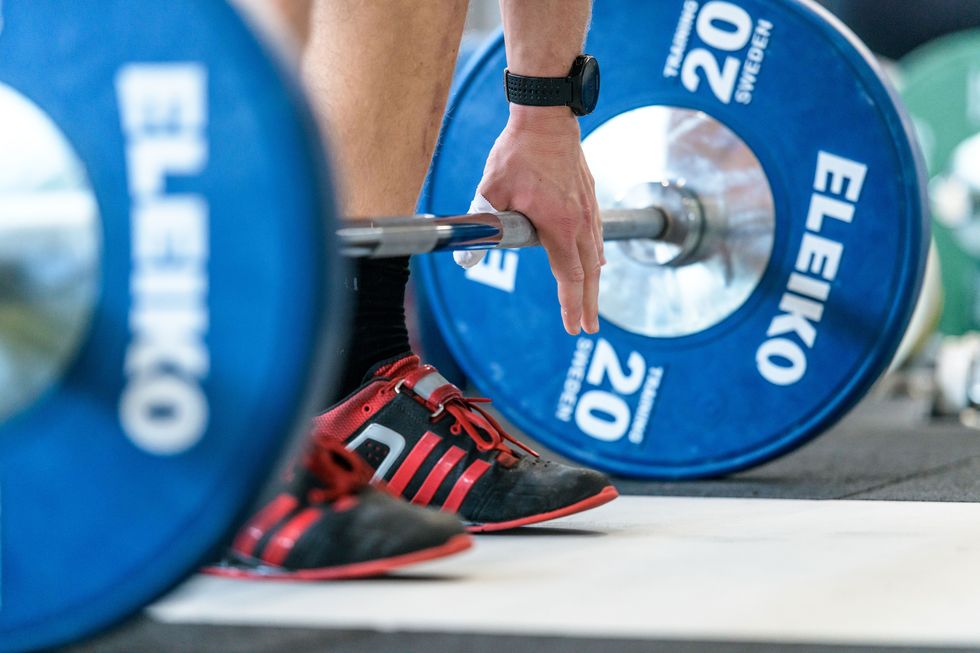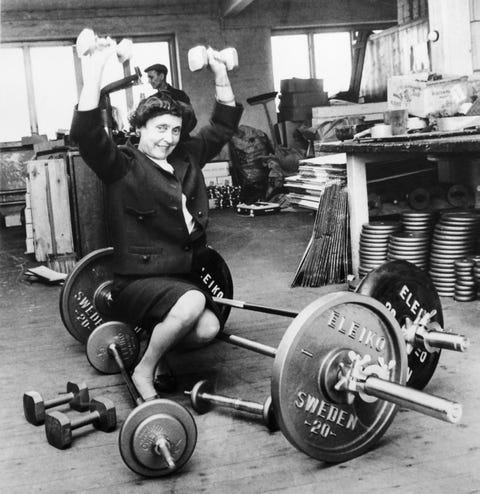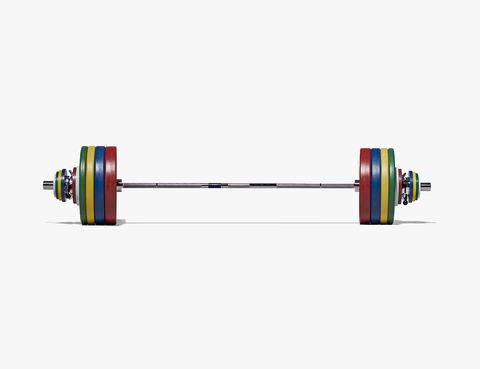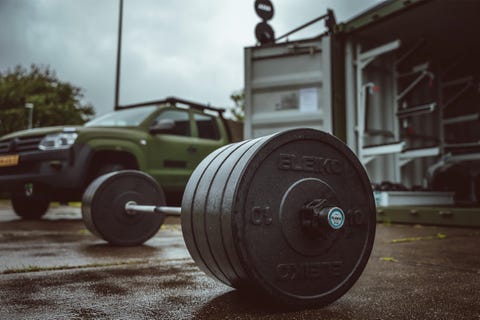Eleiko Plates and Barbells: What Makes the Swedish Brand So Good? – Gear Patrol

|
Getting your Trinity Audio player ready...
|
SOURCE: Ben Emminger | Gear Patrol
Few brands truly live up to the term “gold standard” with their product offerings — Rolex, Yeti, Herman Miller, Leica. The world of strength training has its own example, too.
Sweden-based Eleiko has been the leader in performance strength equipment since it set out to create the perfect barbell in 1957, though today the brand is perhaps best known for its color-coded bumper plates.
Even if you’ve never heard of Eleiko before, you’ve probably seen its gym equipment on the television — the brand has been the sole supplier of the Olympics for half a century. Over 65 years and more than 1,000 world records later, Eleiko continues to raise the bar with precision-crafted equipment for everyone from the competitive athlete to the daily gym-goer.
But the roots of this weightlifting icon are not as polished as the Swedish steel used in manufacturing. Discover the unusual beginnings of this fitness staple and how a dedication to excellence has led to one of the most recognizable names in strength training.
Early History of Eleiko
Eleiko was founded in the Swedish town of Halmstad in 1927, but despite the reputation it carries today, the brand’s focus was initially elsewhere. Back then, Eleiko produced electrical appliances, including waffle irons, toasters and ovens.
Eleiko began experimenting with barbells in 1957 after factory supervisor Mr. Hellström approached managing director Tyra Johansson with the proposal.
An avid weightlifter himself, Hellström was frustrated with the lack of quality barbells on the market. In the 1950s, it was common for weightlifting competitions to go through multiple bars, as they would break or bend as athletes continued to add weight and push performance.
No Pain, No Gain
While Johansson approved Hellström’s proposal to begin on a prototype for the “perfect barbell,” a few roadblocks stood in their way. Aside from diving into a completely different realm of products, Johansson was a female director — an unusual role for Swedish women in the 1950s.
As such, she was first denied a loan for the project from Eleiko’s longstanding bank. Fortunately, Johansson persevered, eventually finding the financial support needed for the prototype. Her dedication proved to be worth it, as the entire fitness landscape was about to witness a revolution.

Onto the World Stage
After years of testing and development, the first Eleiko barbell made its appearance at the 1963 World Weightlifting Championships in Stockholm. The bar was made of a special, hardened steel from northern Sweden — Eleiko still uses the same steel mill to this day — and featured aggressive knurling that resembled a waffle iron pattern, a sort of nod to the brand’s heritage.
The revolutionary barbell left an immediate impact on the sport, lasting the entire competition without bending or cracking. After that fateful week in Stockholm, Eleiko’s reputation continued to grow.
The quality and performance was so apparent, that recognized federations began going straight to the source to supply competition-grade equipment. Eleiko became the first fitness brand to be certified by the International Weightlifting Federation in 1969, and today holds unique certifications from the International Powerlifting and Para-Powerlifting Federations as well.
The Birth of the Bumper Plate
After revolutionizing the weightlifting platform in Stockholm with the new competition bar, it didn’t take long for Eleiko to begin working on the other piece of the puzzle: the plate.
In 1967, an Eleiko employee met a weightlifter with an unorthodox solution for reducing the damage inflicted on his weight plates when dropping them to the ground. To help maintain the discs and suppress the clanging noise, the weightlifter would wrap his steel plates with rubber tires. This spark of ingenuity was all the brand needed for taking off on its next fitness endeavor.

Shortly after the encounter, Eleiko collaborated with the Swedish Halmstad Rubber Factory to produce a unique mix of ingredients. This rubber blend provided durability and structure without a ton of bounce, and thus, the first line of Eleiko rubber weight plates were introduced to the world. To this day, Eleiko still trusts the Halmstad Rubber Factory to produce its lineup of rubber plates — a testament to Eleiko’s quality and dedication to using the best resources in every product.
Eleiko’s impact on weight plates did not stop at rubber, however. Ever notice the color scheme on competition plates? Well, it wasn’t always as universal. Manufacturers had their own color schemes for their weight varieties, but Eleiko pursued standardization by the IWF for universal clarity. Ultimately, the brand’s red, blue, yellow, green and white palette prevailed and is what we now identify with competition-style plates.

Quality Is Never Diluted
The innovation and best-in-class performance has always been at the heart of Eleiko’s manufacturing, which is why so many strength sports federations turn to the brand for competition-ready equipment. But you don’t have to be a competitive lifter to feel the quality built into every Eleiko product.

While some components are changed between competition and training equipment, the focus on quality assurance remains consistent throughout the Eleiko lineup. Every standard barbell, regardless of purpose, is tested at the competition level. This includes a 1,500 kg bend test at the center and 2,000 kg at the end of each bar. No matter where the barbell ends up — whether in your garage gym or on the Olympic platform — you can rest easy knowing its met the highest of standards.
The quality is not lost in Eleiko’s other offerings, like bumper plates or kettlebells, either. And while Eleiko’s lasting commitment to excellence has kept them atop the fitness world, they’re still striving to create the ultimate workout experience.
All of this premium manufacturing does come at a cost, however. In order to ensure the performance is maintained, Eleiko uses only the highest-grade materials and standards. When compared to other fitness equipment, there are more cost-effective options out there, but few are able to match the caliber within each build. It is an investment, but a worthwhile one that’s littered with performance and confidence in product.

The Innovation Continues
History is there to guide, and when your history is as shrouded in excellence as Eleiko’s, it could be easy to get comfortable in your lane.
Rather than resting on its laurels, Eleiko continues to push toward excellence and strives to inspire more and more people to lift. Alongside the proven plate and barbell technology, the stable has expanded far beyond the competition platform, including specialty bars, dumbbells, kettlebells, collars, racks and more.
At the heart of all this innovation and quality is the user experience, too. To help compliment product development and support the brand’s goal to make people stronger for better performance in sports and life, Eleiko also offers plenty of educational resources to trainers, athletes and fitness newcomers.
Eleiko’s journey to the top is a unique tale of how attention to detail can lead to prominent staying power. From a waffle iron to today’s record books, the road travelled by the Swedish brand has definitely been paved in gold.
This article was originally published on Gear Patrol. You can view the original article here.

